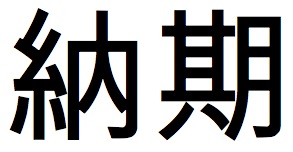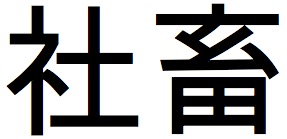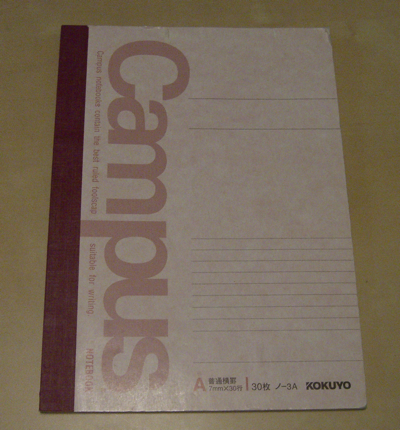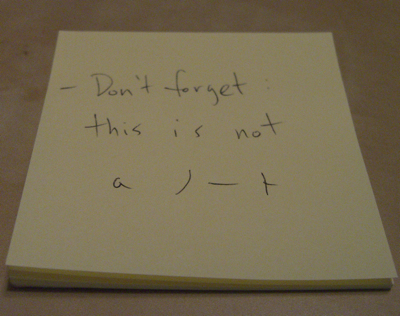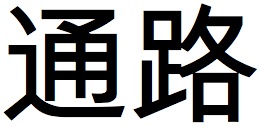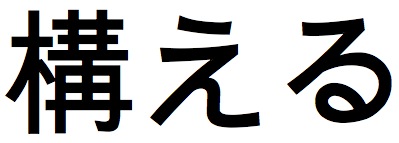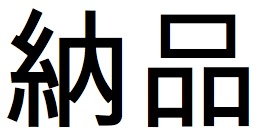
When I joined my company in 2008, I started work on a Thursday. I figured that would give me a nice two day period to get used to things before I had to tackle a full week. After very little in terms of orientation or introduction, they had me busy with an intense check of some business reports for a steel company. On Friday at the end of the day, one of the three other project managers said, “Oh yeah, Daniel. You need to fill out your shoehole.”
Shoehole? I thought. OK, sure. What’s a shoehole? “Here I’ll forward you mine.” Oh, it’s a weekly report or something. Cool. I managed to use my coworker’s template to fill out the work I’d done and then send it to the right people.
For the next few weeks, I updated my “shoehole” file diligently, still kind of wondering what the hell “shoehole” meant. I thought maybe it was some kind of compartment where employees used to deposit written reports in the 19th century, a term lovingly carried up to the present day, that I had been unaware of for 27 years.
At some point I finally realized what “shoehole” actually meant – 週報 (しゅうほう), weekly report. I place some of the blame for this on my own idiocy and the other guy’s pronunciation, but a lot of it is due to the office attitude, which was (and still is) one of doing for others rather than helping others learn how to do a better job. I’d been saying “shoehole” to everyone for a few weeks…and not a single correction? Maybe expecting an explanation of 週報 is a little much, but 90% of what I’ve learned on the job has been trial and error. The other 10% has been from questions I asked others. No one, not even other project managers, has gone out of their way to make anything easier, and I’d even say that the way information is kept from employees makes things more difficult and provides no incentive to be creative or efficient.
So in response to the apparent interest in project management and freelance translation last week, I’ve decided to start introducing some project management vocabulary, hopefully to arm you all with information I wish people had taught me. These will be useful to translators as well, especially if you are trying to communicate with a Japanese project manager or client.
The first word is the most important – 納品 (のうひん). This is a complex way to say “deliver.”
翻訳をクライアントに納品しましたので、やっと帰れます!
I delivered the translation to the client, so I can finally go home!
今日納品が三つあって忙しい。
I’m busy today – I’ve got three deliveries to make.
Pretty simple once you get it down. The compound is in the pattern VERB + DIRECT OBJECT (品を納める) and combines the character for product (品, しな) with the multifaceted 納, which can mean send, pay, store, and settle, amongst others. It might help if you think of it as “take care of.” That covers a wide range of actions. As you can see from the above examples, it can be used as a noun or a verb.
(NOTE THAT IT DOES NOT MEAN DELIVERY OF TASTY THINGS LIKE PIZZA. That would be 配達.)
A similar and also very useful word is 納税 (のうぜい) which means, using my little hint, “take care of taxes” – pay taxes.
Today is also the debut of my new Japanese site – How to Engrish. Essentially it’s the exact opposite of this site. My goal is to practice writing Japanese and hopefully to make English easier for Japanese people to learn.
I’ve got the Japanese-English language pair covered. Now just to employ an army of linguists to cover every other possible combination. There’s no reason why learning a language should be so difficult – millions of people speak them without any difficulty whatsoever, and a little insight provided by a teacher in the student’s native language can have a great effect. Language study is not a competition, and we should all make an effort to be more understanding with learners: any language mistake diminishes me, because I am involved in language. (It’s still OK to laugh at mistakes though.)
I’ll be going through some major changes in the next few months, so I’ll only post once a week at How to Engrish, and I plan to cut my posts here at How to Japonese down to two a week for now (starting next week) and possibly one a week with the occasional 号外 post. 2010 is certainly turning into an exciting, aggressive year: keep your hands and feet inside the vehicle and secure all children and personal belongings.

